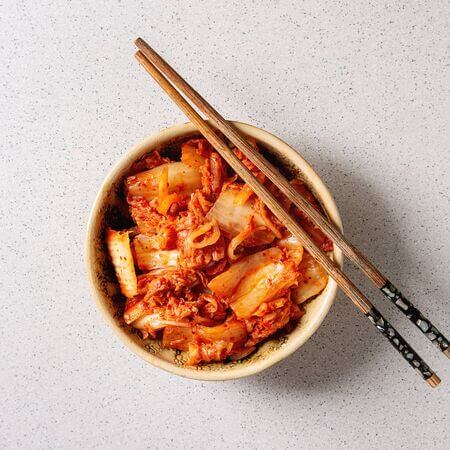
History
The relationship between South Korea and Japan has been quite complicated, especially since the Japanese domination between 1910 and 1945. During this period, Japan attempted to erase Korean identity (its language, writing, culture…) so that the country would become a fully Japanese territory.
Korean War –
Korea was divided into two distinct countries by the Yalta Agreement at the end of World War II. The north was supported by the Soviet Union and China, and the south by the United Nations. A war seemed inevitable. After three years of fierce fighting, there was no victor, and the existence of two distinct countries was recognized.
Contactez nous!


Gastronomy
Korean cuisine is generally quite balanced. Rice is the staple, often served with a set of small dishes (called “banchan”), consisting of vegetables, meats, eggs, and fish, from which one picks and chooses. Kimchi, a spicy fermented napa cabbage, is usually present. Its place in Korean cuisine is comparable to that of camembert cheese in France. There are also numerous culinary specialties, which are generally savory dishes, such as japchae, bibimbap, ramyeon, bulgogi, bindaetteok, and many others.
Soju is the most widespread Korean alcoholic beverage. It is made from rice. Green tea is also a typical drink, as in many Asian countries.


Traditions
South Korea has rich traditions of its own, although they share similarities with its neighbors such as Japan, which is better known in the West. These traditions remain quite present in society, mainly in rural areas. Since ancient times, Koreans have used a unique underfloor heating system called “ondol.” They used wood-fired furnaces that distributed heat under the floorboards, heating the entire house. The “hanok” refers to a house built in a traditional architectural style. It is designed to maintain a close harmony with nature.
Exportation of K-culture
The first K-Pop groups and agencies emerged in the 1990s with the influence of American hip-hop. It is a musical genre characterized by blending singing, rapping, and dancing while drawing inspiration from American musical styles. Today, K-pop has evolved significantly but still retains the same spirit. With its highly colorful and often big-budget music videos, joyful and catchy tunes, K-pop has become a true escape from the pressure experienced by young Koreans. Some groups serve as spokespersons for Korean and even global youth, addressing topics such as identity search, dreams for the future, depression, the harmful effects of social media, the cult of beauty, and other societal issues. This style has a significant presence in Korean life and has been exported internationally at an exponential rate over the past decade, thanks to groups like Bigbang, 2NE1, and BTS
© 2021 All Rights Reserved.
